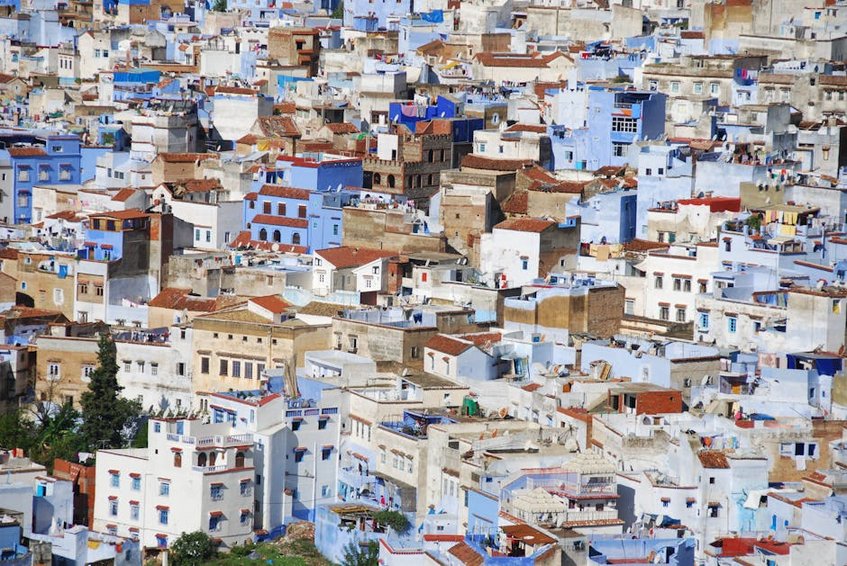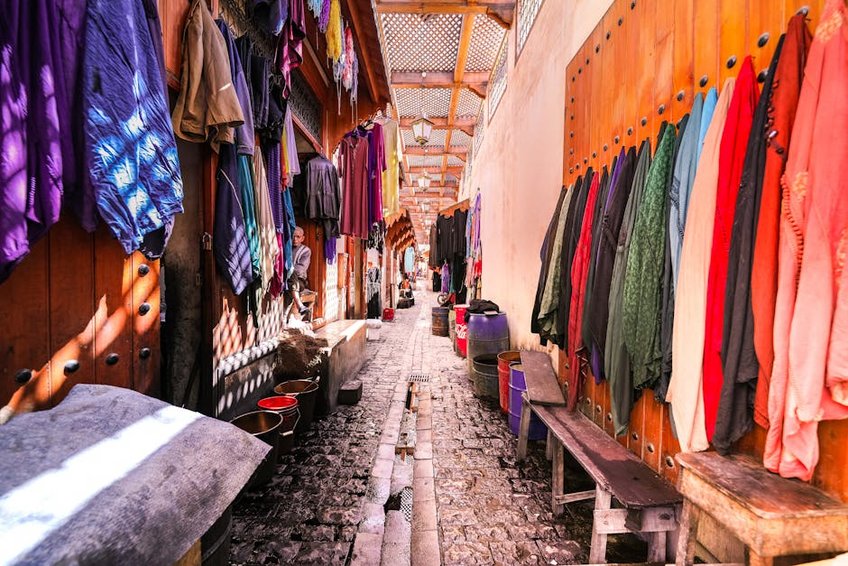Marrakech Medina Streets: Navigating Ancient Alleyways
Marrakech Medina streets immerse visitors in a labyrinth of vibrant souks, historic architecture, and cultural traditions dating back to the 11th century. These narrow passageways reveal hidden riads, artisan workshops, and daily life scenes where donkeys cart goods alongside modern tourists. This guide provides essential navigation tips, budget advice, and cultural insights for exploring Morocco’s most famous old quarter.
Essential Historical Context
The Medina of Marrakech was founded in 1070 by the Almoravid dynasty and remains North Africa’s best-preserved medieval Islamic city. UNESCO designated it a World Heritage site in 1985 for its outstanding urban structure and architectural heritage. The district’s pink-hued buildings and intricate geometric patterns reflect traditional Moroccan craftsmanship.
Navigating the medina’s approximately 600 hectares requires understanding its division into distinct quarters specializing in different crafts. The souks organize by trade with separate areas for leatherworkers, metalworkers, spice merchants, and carpet sellers. This traditional zoning system has operated for centuries, maintaining authentic commercial practices.
Key Historical Periods
Understanding these eras helps appreciate the medina’s architectural diversity.
- Almoravid Period (1070-1147): Established the original city layout with the Koutoubia Mosque foundations and first defensive walls.
- Almohad Caliphate (1147-1269): Added major monuments like the Kasbah walls and developed the sophisticated water system.
- Saadian Dynasty (1554-1659): Constructed elaborate tombs and palaces with intricate stucco work and cedar wood ceilings.
- Budget travelers spend $50-80 daily staying in hostels or budget riads, eating street food, and using local transportation. This covers basic accommodation, three inexpensive meals, and entrance fees to major sites like Bahia Palace.
- Mid-range visitors allocate $100-150 daily for comfortable riads with pools, restaurant meals, guided tours, and moderate shopping. This budget includes better-located accommodation, taxi transportation, and artisan purchases.
- Luxury experiences cost $200-400 daily featuring premium riads or hotels, fine dining, private guides, and high-quality souvenirs. This covers spa treatments, gourmet restaurants, and commissioned artwork from medina workshops.
- Moroccan National Tourist Office
- UNESCO World Heritage Centre
Architectural Features and Layout
The medina’s urban design follows traditional Islamic principles with inward-facing buildings surrounding courtyards. Narrow streets intentionally provide shade and channel breezes through the dense urban fabric during hot summer months. This design maintains comfortable temperatures reaching 100°F (38°C) in July while creating intimate social spaces.
Traditional buildings feature high walls with minimal exterior decoration, focusing ornamentation on interior courtyards with fountains and gardens. The distinctive pink color comes from local clay mixed with lime wash, creating the characteristic ochre hue visible throughout the old city. Preservation efforts maintain these authentic materials and construction techniques.
Cultural Significance Today
The medina remains Marrakech’s cultural heart where traditional crafts, cuisine, and social customs thrive alongside tourism. Approximately 200,000 residents live within the medina walls, maintaining generational family homes and businesses. This living heritage creates an authentic atmosphere distinct from museum-like historic districts.
Local festivals like the Popular Arts Festival and Ramadan celebrations transform the streets with music, storytelling, and special night markets. These events offer visitors deeper cultural immersion beyond daytime shopping and sightseeing. Respectful observation and participation enrich the travel experience significantly.
Planning Your Marrakech Medina Streets Trip
Successful medina exploration requires strategic timing between October and April when temperatures range from 65-80°F (18-27°C). Summer months bring extreme heat exceeding 100°F (38°C), making extensive walking uncomfortable. Shoulder seasons offer pleasant weather with fewer crowds and lower accommodation prices.
Budget between $50-150 daily depending on accommodation style, dining preferences, and shopping plans. Street food meals cost $3-7, while restaurant dining runs $15-30 per person. Riads (traditional houses) range from $40-200 nightly, providing authentic lodging within the historic walls.
Essential preparations include comfortable walking shoes, light layers for temperature changes, and cash in Moroccan dirhams for smaller vendors. Download offline maps since GPS signals often fail in the narrow, winding alleyways. Learning basic French or Arabic phrases enhances interactions with local shopkeepers.
Best Time to Visit Marrakech Medina
Visit between March-May or September-November for ideal weather conditions averaging 70-85°F (21-29°C) with minimal rainfall. These periods avoid summer heat waves and winter chill while providing comfortable exploration conditions. Spring brings blooming orange trees and milder crowds before peak season.
December-February offers cooler temperatures around 55-68°F (13-20°C) but requires warmer clothing for early mornings and evenings. Hotel rates drop 20-30% during this period, providing better value for budget-conscious travelers. January sees the Marrakech International Film Festival, adding cultural events to your itinerary.
Budget Planning and Costs
Daily expenses vary significantly based on travel style and accommodation choices.
Essential Preparation Checklist
Pack lightweight, modest clothing covering shoulders and knees to respect local customs, plus a scarf for mosque visits. Include sturdy walking shoes with good traction for uneven cobblestone surfaces that can be slippery. Sun protection is crucial with hats, sunglasses, and high-SPF sunscreen for extensive outdoor exploration.
Bring multiple payment methods including cash (Moroccan dirhams) for small purchases and credit cards for larger establishments. European-style power adapters (Type C/E) work in Morocco with 220V voltage. Travel insurance should cover medical evacuation and theft protection for valuable cameras and electronics.

Alt: “marrakech-medina-alleyway-souks-artisan-shops”
Top Attractions and Navigation
Jemaa el-Fnaa square serves as the medina’s primary entrance and orientation point, transforming from daytime market to nighttime food festival. From this central plaza, main thoroughfares lead to different souk districts specializing in specific crafts and goods. Navigating requires recognizing landmarks like prominent mosques or distinctive shops as reference points.
The souk system organizes into logical sections with leather goods near Place des Ferblantiers and spices closer to the Rahba Kedima square. This traditional zoning helps visitors locate specific items while understanding the medina’s commercial history. Allow 3-4 hours for thorough exploration of the main market areas.
Must-See Highlights
Ben Youssef Madrasa showcases breathtaking Islamic architecture with carved cedar wood, marble courtyards, and intricate zellij tilework dating to the 14th century. This former theological school once housed 900 students and represents Saadian dynasty artistic achievements. Visit early morning to avoid crowds and photograph the stunning central courtyard in soft light.
Bahia Palace features 150 rooms across 8 hectares with magnificent courtyards, reception halls, and gardens demonstrating 19th-century Moroccan elegance. The palace’s name means “brilliance” and reflects the grand vision of Si Moussa, vizier to Sultan Hassan I. Allow 90 minutes to appreciate the stucco work, painted wood ceilings, and tranquil outdoor spaces.
Saadian Tombs contain approximately 60 members of the Saadian dynasty in mausoleums decorated with Italian Carrara marble and gold-leaf cedar ceilings. Hidden behind walls for centuries, the tombs were rediscovered in 1917 and represent some of Morocco’s finest Islamic art. Arrive at opening to experience the site with minimal visitors.
Hidden Gems and Local Favorites
Dar Bellarj Foundation occupies a restored stork hospital and hosts contemporary art exhibitions alongside traditional craft workshops in a peaceful courtyard setting. This cultural center provides respite from the bustling markets while supporting local artists and preservation projects. Check their schedule for special events during your visit.
Musée de Marrakech combines art exhibitions with stunning architecture in the Mnebhi Palace, featuring a massive central chandelier and beautifully restored reception rooms. The museum’s collection includes historical documents, ceramics, and contemporary Moroccan art displayed throughout the palace’s elegant spaces. Combined tickets with Ben Youssef Madrasa offer better value.
Secret gardens like Le Jardin Secret reveal traditional Islamic garden design with geometric layouts, fountains, and rare plant species behind unassuming medina walls. This recently restored palace features a 19th-century pavilion with panoramic views from its tower. The site exemplifies how hidden beauty exists throughout the medina’s seemingly plain exteriors.
Shopping and Artisan Districts
The souks specialize by craft with leatherworkers concentrated in the Cherratine district near Place des Ferblantiers. Here you’ll find babouches (traditional slippers), bags, and jackets with opportunities to watch artisans at work. Quality leather goods range from $20-150 depending on craftsmanship and materials.
Metalworkers occupy the Haddadin district creating lanterns, tea services, and decorative items using techniques passed through generations. Copper and brass items make excellent souvenirs with smaller lanterns starting around $15 and elaborate pieces reaching $200. Watching the crafting process adds significance to purchases.
Practical Travel Information
Marrakech-Menara Airport (RAK) serves international flights with convenient taxi access to the medina in 15-20 minutes for approximately $20. Within the old city, walking remains the primary transportation method, though petit taxis reach perimeter areas for short trips under $5. Rental cars prove impractical within the medina’s pedestrian-focused streets.
Accommodation ranges from budget hostels starting at $15 nightly to luxury riads exceeding $300, with most clustered in the northern medina near Bab Doukkala. Booking three months ahead secures better rates and preferred locations, particularly during November-April high season. Many riads offer airport transfer services included in room rates.
| Category | Options/Features | Price Range (USD) |
|---|---|---|
| Accommodation | Traditional riads with courtyards, modern hostels, luxury hotels with pools | $30-400 |
| Food & Dining | Street food stalls, casual cafes, fine dining restaurants with traditional cuisine | $5-60 |
| Transportation | Walking, petit taxis, carriage rides, bicycle rentals near medina gates | $2-25 |
| Shopping & Souvenirs | Leather goods, ceramics, spices, textiles, lanterns from artisan workshops | $10-500 |


